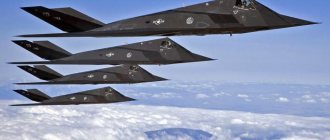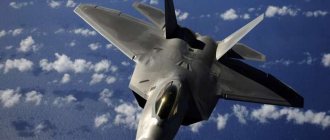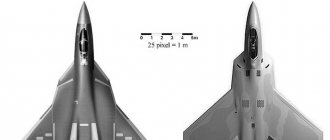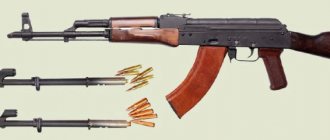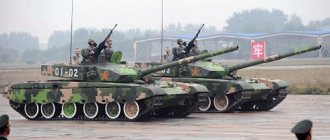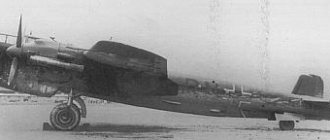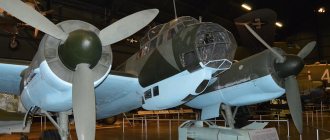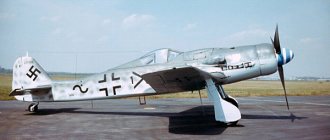Deck comparison. Is the J-15 better than the Su-33?
Just a month ago in China, a Shenyang J-15 fighter landed on the deck of the Liaoning aircraft carrier for the first time in the country’s history. By the end of November, the Chinese were already reporting five successful landings. It seems that such successes have turned their heads and the other day an even more interesting message came in regarding China’s aircraft carrier program. An article appeared in the online publication People's China Online in which the new Chinese J-15 is compared with the Russian Su-33 and the comparison is not made in favor of our aircraft. The representative of the Chinese Ministry of Defense, Geng Yansheng, mentioned modern on-board electronics, design excellence, the ability to strike ground targets, etc. as evidence of the superiority of his fighter. In light of some data on the creation of the J-15 fighter, all these statements look, at least, ambiguous. Let's try to figure out whether Comrade Gen's words are true.
First we need to remember the history of the development of the J-15 aircraft. According to available data, back in the late nineties, China tried to buy fifty Su-33 carrier-based fighters from Russia. During negotiations on a possible contract, the number of desired aircraft was constantly reduced and was eventually reduced to two units. It is not difficult to guess that two fighters cannot equip even one aircraft carrier, but they can be used for reverse engineering with the subsequent deployment of their own production of a copy. Despite the difficult economic situation and the need for new contracts, Russian aircraft manufacturers refused to China and did not sell a single Su-33. A little later, China agreed with Ukraine on the sale of one of the Su-33 prototypes - the T-10K - and some documentation for it. Around the mid-2000s, a Ukrainian plane departed for China. In the summer of 2010, the first flight of the J-15 carrier-based fighter of “independent” development was reported. It is worth noting that already at that time the Chinese called the J-15 a development of the previous J-11 (first a licensed and then a counterfeit copy of the Russian Su-27SK), and not a copy of the T-10K/Su-33. In this case, it turns out that for some unknown reason the development of the J-11 project followed exactly the same path as it did with the Su-27K, which later became the Su-33.
The available photos show that the Chinese J-15 has almost no noticeable external differences from the Russian Su-33. It is possible that some parts may have a different appearance, but their detection requires a careful and detailed inspection of the two aircraft. Thus, the design differences between the airframes of the two carrier-based fighters are most likely only of a technological “nature”. The Chinese themselves talk about some newer and more advanced materials. Most likely, some parts of the airframe are made of either other alloys or composite materials. One way or another, such design changes may lead to some lightening of the aircraft and easier maintenance. However, no weight advantages were achieved. An empty J-15 weighs the same as a Su-33. Other mass indicators also differ slightly. When it comes to aerodynamics or flight performance, the J-15 is unlikely to benefit in this regard simply by changing the airframe design.
A much more important element of an aircraft in terms of performance is its engines. Like the T-10K purchased from Ukraine, the J-15 is equipped with two bypass turbojet engines. According to available data, the J-15 is equipped with Shenyang WS-10A engines with afterburning thrust of about 13,500 kgf. WS-10A produces almost a ton more thrust than the Russian AL-31F. Thanks to this, the Chinese fighter has a maximum speed of M = 2.4, which is approximately 200 km/h higher than that of the Su-33. In general, the declared flight characteristics of the Chinese J-15 fighter are at least not lower, and in a number of indicators even higher than the characteristics of the Russian Su-33. At the same time, it is worth noting such an important issue as engine manufacturing technologies and their service life. Since the WS-10 engine family is most directly related to the Russian AL-31 line, several versions appear at once. For example, the Chinese could copy not only the design of Russian engines, but also the technology for manufacturing their parts. It is the technological part of modern aircraft engine building that is one of the most difficult tasks. It looks like the complete copying was never successful. The latest modifications of WS-10 engines, according to open sources, have a service life of only 200 hours. For the AL-31F this parameter is five times greater. Recently, the Chinese announced that they had found a way to increase the service life of purchased AL-31Fs to one and a half thousand hours, but their technology implies modification of the engines after purchase. Perhaps they will be able to introduce such technologies into the production of WS-10, but at present the service life of these engines leaves much to be desired and Chinese aircraft manufacturers have to purchase engines en masse from Russia. Overall, the WS-10A engine is a poor compromise between performance and survivability.
The Chinese press points to its ability to attack ground targets as an advantage of its aircraft. The Su-33's range of weapons includes unguided bombs of up to 500 kilograms in caliber and unguided missiles of various types. During testing, attempts were made to use the X-41 Mosquito anti-ship missiles, but production aircraft no longer have this capability. As a matter of fact, in the concept of a domestic carrier-based fighter, paramount importance was attached to protecting ships from attack from the air, and attacking ground targets was just an additional possibility. There is no precise information yet about the range of weapons of the Chinese J-15 aircraft, and therefore there is every reason to assume that its capabilities for striking on the ground are also limited. If China decides to develop its aircraft carrier fleet in accordance with American views on this issue, then it is quite possible that some kind of guided weapons will appear in the J-15 arsenal. At the moment, there is no exact information about this and in fact, all data is limited only to the words of Geng Yansheng.
In the case of the J-15 avionics, there is not much more information. It is alleged that the fighter's computer system has much better characteristics compared to the Su-33's avionics; for example, the performance of the main computer is several times higher. Of course, at first glance such statements look promising. However, for a full analysis of the combat capabilities of radio-electronic equipment, including an on-board computer, other information is also necessary, down to the specific tasks and characteristics of a particular element of the computer complex. In addition, even a super-powerful computer will not provide the expected capabilities if the avionics does not have other equipment with the appropriate characteristics. For example, a poor airborne radar system cannot help unlock the full potential of a powerful computer. Interestingly, there is still no specific information regarding the radar of the J-15 fighter. It is claimed to carry an active phased array station, but there is reason to doubt this. One way or another, the on-board electronics of a fighter must be “balanced”, otherwise achieving high performance is by definition impossible. It should also be noted that most recent aircraft have developed on-board electronics, including for interaction with the latest guided weapons. At the moment, only the possibility of using air-to-air guided weapons by the J-15 fighter is known. Guided weapons for striking ground targets, which require a complex set of on-board equipment, are still in question.
And yet, one cannot help but admit that the avionics of the J-15 fighter, namely the computer complex, most likely actually has higher characteristics than the equipment of the Su-33. The reason for such a lag of the Russian aircraft is simple and obvious. This August marked the 25th anniversary of the first flight of the T-10K prototype. The J-15, in turn, took off just a couple of years ago. The difference of twenty years could not but affect the composition and capabilities of the on-board equipment. So the very comparison of the Su-33 and J-15 undertaken by the Chinese is doomed to failure. Given the large difference in the age of the aircraft, as well as in light of the obsolescence of the technology, such a comparison is in some sense unfortunate for the Chinese fighter. Even if the J-15 really is ahead of the Su-33 in all characteristics - which, it must be said, is not observed - this only means that China, in technological terms, was able to catch up not with Russia, but also with the Soviet Union of the second half of the eighties. Such a “victory in the race” would be honorable for a developing country, but for a five-minute superpower, as China positions itself, this already looks quite doubtful.
It is quite clear that the Su-33 was chosen as a “rival” in comparison only because the J-15 was made, at a minimum, using documentation for it. Therefore, a newer aircraft may look better in some respects. However, for greater fairness, one should compare not the old plane with the new one, but two new ones. In this case, the J-15’s “rival” could be the updated MiG-29K or its training version, the MiG-29KUB. The latest version of the MiG-29K is actually a development from the late eighties - early nineties, significantly improved in recent years, which is a bit similar to the J-15. Of course, the Mig-29K and J-15 are seriously different even at the level of weight and size parameters: the maximum take-off weight of the Chinese fighter is almost one and a half times greater than that of the Russian one. At the same time, the MiG-29K has modern avionics, high thrust-to-weight ratio (more than one at normal take-off weight) and the ability to use air-to-surface guided weapons. Thus, the Russian development already has all the advantages that the Chinese boast of when comparing their new aircraft with our old one.
When comparing truly new carrier-based aircraft, one can also remember the start of service dates. According to current statements by Chinese officials, the J-15 will enter service in 2014-15. At the beginning of this year, the Russian Ministry of Defense ordered RSK MiG two dozen MiG-29K and MiG-29KUB fighters. The order execution date is 2015. Thus, the MiG-29K and J-15 will enter service almost simultaneously. It is also necessary to recall that the Su-33, which was initially compared to the Chinese fighter, is planned to be put out of action by the same time due to exhaustion of its service life. They will be replaced by new MiG-29K. As a result, the J-15 is guaranteed to be able to compete with Russian carrier-based fighters only in numbers. However, in this case, a serious limiting factor for both aircraft will be the number of available aircraft carriers, which will have to be taken into account when calculating the required number of fighters. Over the next few years, Russia will have only one aircraft carrier, and the construction of new ones is only planned. It is unlikely that new ships with aircraft on board will enter service before 2022. China, in turn, also having one aircraft carrier, is going to build new ones, although in its case it is too early to talk about the number and timing.
As we can see, the statements of the Chinese military about the superiority of the Shenyang J-15 fighter over the Su-33, if true, are only partly true. For example, higher flight performance is “compensated” by the short engine life, and all the advantages in electronic equipment are easily explained by novelty alone. Yet the main problem with comparing these aircraft lies in the age of the machines. It is this aspect that not only neutralizes all the advantages of the Chinese car, but also puts some Chinese citizens in a not very good light, because in comparison with the newer Russian car, the J-15 no longer looks modern, unique and invincible.
Based on materials from the sites: https://lenta.ru/ https://english.peopledaily.com.cn/ https://airwar.ru/ https://china-defense.blogspot.ru/ https://sac. com.cn/
"Krechet" fifth generation
The new Chinese version is the promising J-31 fighter currently in development (the index FC-31 is used until it is put into service). The aircraft was nicknamed “Krechet” and is intended for aircraft carriers equipped with a catapult take-off system.
In October 2012, China announced itself as the second country in the world (after the United States) to simultaneously implement two programs to create fifth-generation fighters. One of them is the J-31, the second is the J-20 “Mighty Dragon” multi-role stealth fighter, which is being developed by the Chengdu Aircraft Industry Group. The J-20 made its first flight in 2011, and this model entered service with the PLA in March 2022.
wikipedia.org/Alert5/CC BY-SA 4.0
Officially, the Chinese army practically does not support the J-31 project, transferring all powers to the Shenyang Aircraft Corporation. China believes that the J-31 could become the first carrier-based fighter aircraft made entirely in China. According to Chinese media, at least two J-31 prototypes have been built to date.
A study of military-technical publications of the People's Republic of China shows that the second prototype of the J-31 differs in design from the first: it has a one-piece canopy, a slightly expanded fuselage, and a modified vertical tail. Moreover, the new version is three tons heavier than its predecessor.
The main improvements were noted in the field of aerodynamics: a more secretive wing shape, an engine exhaust camouflage system, as well as an improved avionics system produced by the national aircraft manufacturing concern Aviation Industry Corporation of China (AVIC).
希望能在今年的迪拜航展上看到歼31中东的天空! pic.twitter.com/2T5RtZSJ7G
— 老子骑牛 (@laoziqiniu) August 14, 2017
In addition, an optical-location station is installed in the bow of the second prototype. The weapons bay has been enlarged to accommodate up to six air-to-air missiles of the PL-10, PL-12 and PL-21 types. Presumably, the new J-31s are equipped with Chinese engines (WS-13 series), in addition, similar Russian RD-93 turbofan engines can also be used as a power plant. Such, for example, are installed on Chinese FC-1 Xiaolong fighter-bombers - Pakistani development.
wikipedia.org / Shimin Gu / CC BY-SA 4.0
Prospects for the emergence of a new fighter
The promising J-31 will have a two-wheeled nose landing gear, which suggests that promising Chinese aircraft carriers are planned to be equipped with steam or electromagnetic catapults. Compared to the J-15, the smaller size of the J-31 will provide it with greater maneuverability when deployed on an aircraft carrier.
The deck version of the “Krechet” is supposed to be equipped with a folding wing of a larger span and a brake hook. Thus, the J-31 is close in size to the Russian MiG-29K/KUB, which experts classify as the 4++ generation. At the same time, it also has features characteristic of 5th generation fighters, for example, a weapons compartment. The first flight of the J-31 prototype is expected to take place no earlier than the end of 2020.
In general, the fact that the development company is creating the J-31 with its own funds suggests that China is developing a prototype fighter to test 5th generation technologies. Based on the results, a tactical and technical specification for the PLA can be prepared, a rapid (up to five years) refinement of the prototype can be carried out, and it can be tested.
The success of the J-31 fighter project will depend both on whether Chinese aircraft manufacturers can achieve the required technological level, and on the position of the Chinese leadership - whether the Krechet will be accepted into service and whether it will be promoted to the world market of military equipment.
